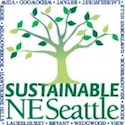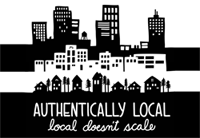Tomorrow (Thursday) morning, the director of the city’s Department of Planning and Development, Diane Sugimura, is meeting with Mayor Mike McGinn about the future of the Roosevelt Neighborhood Rezone Plan.
If you have an opinion about the Roosevelt Neighborhood Rezone Plan, and whether or not the Department of Planning and Development should let it move ahead, PLEASE let Mayor McGinn (Mike.mcginn@seattle.gov) and DPD Director Sugimura (Diane.sugimura@seattle.gov know. TODAY.
Background
From the Roosevelt Neighborhood Association’s Land Use Committee Chair, Jim O’Halloran (via email, today):
Not to be too dramatic, but this is an important moment for the neighborhood. I expect that tomorrow, on Thursday, that Mayor McGinn and DPD Director Diane Sugimura will decide whether to continue the Legislative Rezone process on which we’ve worked so hard, or to shelve it in favor of some other process driven by interests from outside the community. We want for DPD to complete their work on the Legislative Rezone package, for the Mayor to sign off, and for the whole thing to be sent to City Council without further delay. Councilmembers Clark and Burgess, at least, are ready to receive it and to do their work in committee to address our critical land use issues.
Some background on the Roosevelt Neighborhood Plan and the recent online conversations, also from O’Halloran (via email on Sunday):
The “legislative rezoneâ€, as you will recall, is a broad set of rezoning proposals for the future light rail station area in Roosevelt. The RNA submitted a detailed list of recommendations to the Department of Planning and Development in 2006, and finally, DPD is almost at the point of submitting the official plan to City Council. But, there are some last minute issues which threaten to derail over five years of community effort.
DPD’s plan is almost identical to what the neighborhood had recommended. Essentially, we said that the community could absorb additional housing and commercial density up to 65 feet high primarily West of Roosevelt Way NE, along NE 65th Street toward the freeway. In the area South of Roosevelt High School, we said that building heights should be limited to 40 feet in deference to the historically landmarked school and surrounding single family homes. If we were willing to accommodate more density in the station area, we felt that it was reasonable for the community to have some say as to where the density would be located. This approach and our specific recommendations have broad support in the Roosevelt and Ravenna communities. The RNA proposal has been posted online since 2006 [here].
DPD has reviewed the RNA recommendations and published their formal proposal on April 21, 2011; you can find this online at http://rooseveltseattle.org/LandUseLegislativeRezone.aspx. Then, something interesting happened. A number of committed bloggers and organizations started complaining to DPD, Mayor McGinn and City Councilmembers that the rezone plan published by DPD was not enough. In any light rail station area, they said, building heights should be much higher; 8 stories, 12 stories or more would be necessary all around the station to achieve population density sufficient to “support†the taxpayer’s investment in mass transit. Never mind the Neighborhood Plan; Roosevelt’s NIMBYs have an obligation to take much more density than had been proposed.
DPD is now trying to decide if the Roosevelt Legislative Rezone process should be “paused†so that a new rezoning process could be initiated, as the density advocates have requested. This step would be a grave insult to the Roosevelt community, and the countless hours of good-faith volunteer effort to plan responsibly for smart growth. We need to weigh in now, in numbers and with passion, to ensure that the Roosevelt Legislative Rezone process is continued and concluded.
Further Reading
For folks who would like to catch up on the recent talk about the Roosevelt rezone, here are some links to recently written posts about this topic with a variety of opinions (most recent, first):
Seattle’s Land Use Code: “ ‘Then, something interesting happened.’ â€









Sisleyville EIS Scoping Comments Deadline Nears
NOW is the time to send in your thoughts about the proposed rezoning of the properties around 15th Ave NE and NE 65th St, if you haven’t already. The deadline for public comments about the Environmental Impact Survey for the Roosevelt Development Group’s proposed zoning changes is next Wednesday, September 1.
If you feel well-informed on the issue, feel free to skip down to the “How should I send in my input?” part of this blog post and start there.
For the rest of us (myself included), I’ve hunted down answers to some common questions about the scoping process AND what the content and form of our comments should be.
What is the scoping process?
I found the following description of the scoping process in the Enviromental Scoping Information Report (EIS) for the East Link Project (applies to our situation as well; emphasis mine):
In other words: Developers want to make big changes in your area. Here are their plans. What do you think?
There have been two public meetings on the Roosevelt/Ravenna rezone issue where public comments were recorded (sort of; DPD tries to explain what happened here, Glenn Roberts gives his impression here). Now the comment collection window is closing. It’s time to let the city know what YOU think about these rezone plans!
Why should I send in my input?
Again: Developers want to make big changes in your area. Here are their plans. What do you think?
It’s in OUR neighborhood where these proposed changes may take place, OUR backyards. It doesn’t matter whether you support the rezones or not: You should let your City know what you think, either way.
What should my input look like?
The Roosevelt Neighborhood Association has an excellent list of comment suggestions (MSWord doc) that will help you organize your thoughts in writing (no matter what side of the issue you’re on):
The DPD has already identified six key elements for discussion in the Environmental Impact Survey for the Sisley properties (DPD Notice of Determination of Significance):
Now, the Roosevelt Development Group has outlined six different proposals for the EIS which were on display at the last scoping meeting on July 21st. You may want to address specific plans in your comments (for instance, the plan that rezones the area for 160-foot-tall buildings). You can find a description of those alternatives here. Graphics of the six alternatives are also online (pdf, 5.6 MB file).
If you want to be a Thorough Theodore, you may want to apply ALL SIX key elements (Height, bulk and scale; Land use; etc.) to ALL SIX of the RDG’s six proposals. Yeah, that’s a lot of work, but that’s what happens when a developer throws six different proposals out all at once.
If you like some direction on which of the six proposals you should spend your time on, Glenn Roberts (Roosevelt-Ravenna Zoning Issues) has the following to say (emphasis mine):
How should I send in my input?
City of Seattle
Department of Planning and Development, Attn: Shelley Bolser
700 5th Avenue, Suite 2000
PO BOX 34019
Seattle, WA 98124-4019
However you choose to send your comments in, INCLUDE THE PROJECT NUMBER: 3010100.
TO SUM UP:
_____________________
References